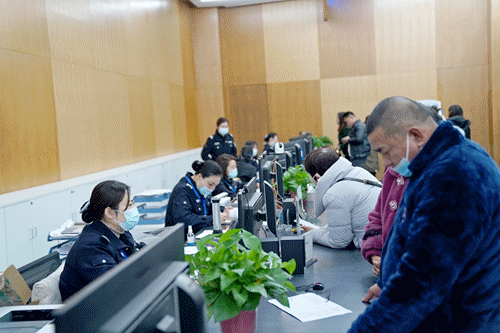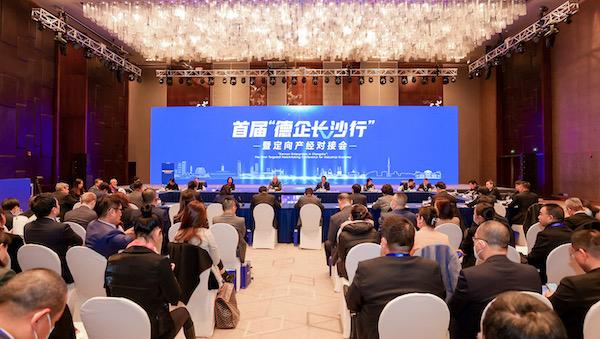Changsha’s quick response and various efforts to stem COVID-19
At the turn of summer and autumn, the COVID-19 has rebounded with a vengeance. Across the country, the epidemic showed a trend of multiple occurrences and local outbreaks. Faced with the "Delta" variant, Changsha, with a population of tens of millions, responded calmly.

Under the strong leadership of the Municipal Party Committee and the Municipal Government, the whole city has built a strict prevention and control system from the overall situation. From August 2 to 12, There have been no new confirmed cases or asymptomatic infections in Changsha, where economic and social life is stable and orderly and residents live as usual.
Accurate and efficient epidemic prevention and control measures
Changsha responded calmly to the sudden epidemic attack.
"We will always adhere to scientific and precise prevention measures to win the battle against the epidemic." On July 28, a COVID-19 prevention and control conference was held in Changsha following a provincial video conference. Wu Guiying, secretary of the CPC Changsha Municipal Committee, immediately issued a mobilization order, clearly proposing the "five in place"— recognition in place, disposal in place, measures in place , linkages in place, and responsibility in place, requiring the all-out efforts to protect people's lives and health.
The municipal epidemic prevention and control headquarter launched the emergency response mechanism and the prevention and control command system. 14 working groups cooperate closely with daily reporting and scheduling to advance the emergency response work.
Changsha promptly implemented closed control of the epidemic areas shortly after the report of two confirmed cases and three asymptomatic infections in Ningxiang city and Tianxin District from July 29 to August 1. Meanwhile, the local government determined the action track of cases by means of "big data plus grid" and carried out large-scale screening by nucleic acid testing.
In medium-risk areas where the residents are accurately divided by community and building, all the people in close contact with confirmed cases have been quarantined in a centralized manner and observed according to their categories. Staff members supervised key sites and coordinated efforts to promote the vaccination. A series of urgent and initiative actions, precise management and control have curbed the spread of the epidemic.
In accordance with the requirements of the Joint prevention and control mechanism of the State Council, Changsha Municipal Committee of the CPC held several meetings to arrange the epidemic prevention and control work intensively. It has always attached great importance to the improvement of emergency response mechanism and advance preparations for the massive outbreak of the epidemic, while implementing the epidemic prevention control measures strictly, promptly and efficiently.
Party organizations and party members at all levels in the city acted upon orders fearlessly to build a strong fortress for epidemic prevention and control. All the departments, including the people's Congress, the Chinese People's Political Consultative Conference, workers, youth and woman mass organizations are mobilized in an emergency to rush to the front line and ensure the implementation of various measures.
Increased nucleic acid testing capacity
Taxi drivers lined up for nucleic acid sampling at the nucleic acid collection site of East Bus Station on August 11. By the end of the day, the site had collected nucleic acid samples from nearly 2,000 people. On the same day, the Municipal Health Commission organized the nucleic acid testing and sampling emergency teams of 3 municipal hospitals to basically complete the nucleic acid sampling work of more than 40,000 taxi and online car drivers in the city within two days at 10 sampling points. At the same time, the shelter laboratory was launched to ensure that the test results can be viewed within 24 hours after sampling.
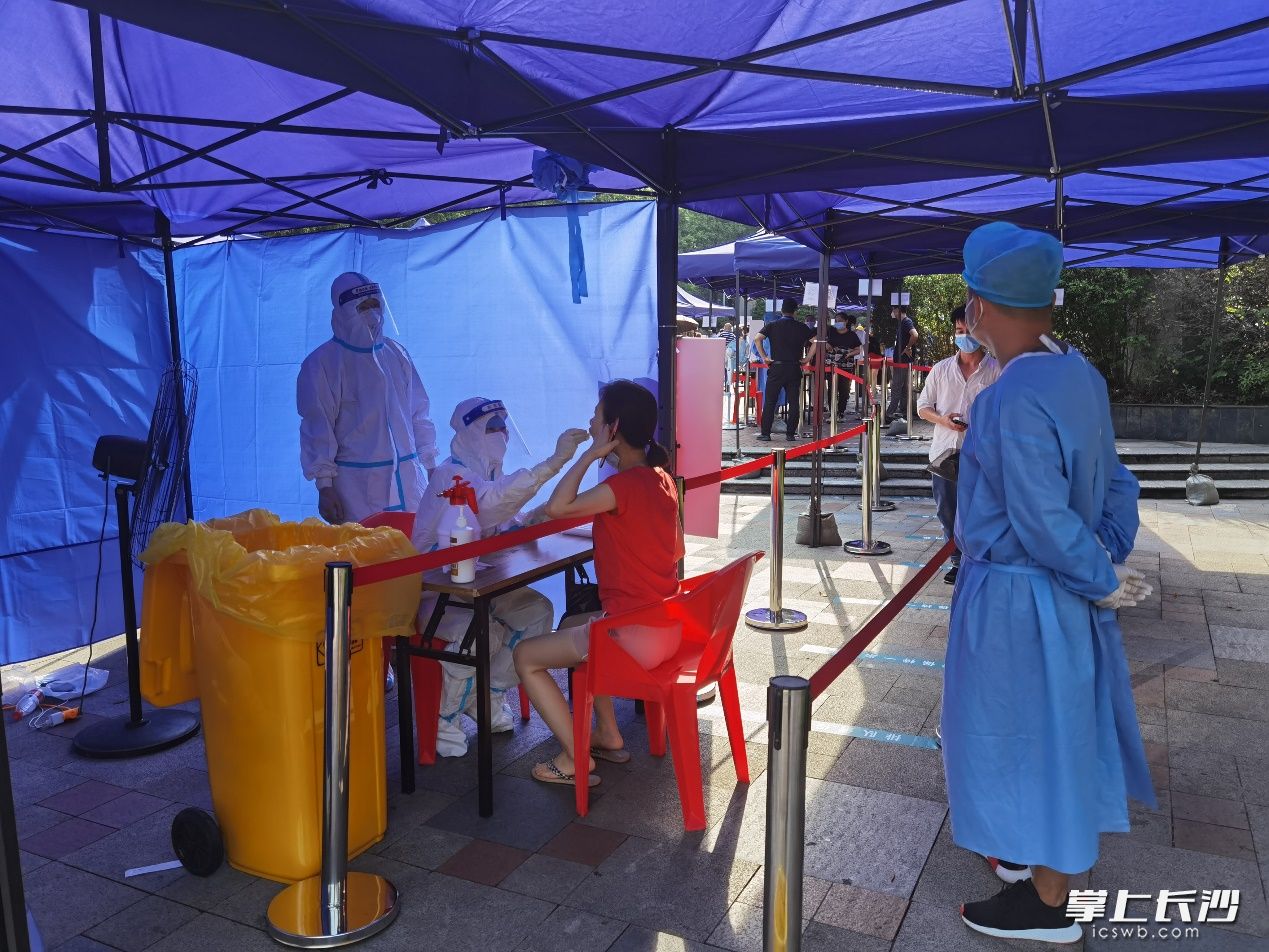
Nucleic acid testing is key to quickly identify the source of infection and curb the spread of the epidemic. According to deployment, from August, a number of municipal hospitals have undertaken the daily nucleic acid testing and sampling for key populations in Changsha's rail transit, public transportation groups, isolation sites, and port units to guarantee their safety.
Since the outbreak of the current epidemic, Changsha has not only intensively screened populations in closed areas and key positions, and expanded screening of peripheral populations, but also required general hospitals, township health centers, and community health service centers above the second level in the city to carry out the sampling for the society, so that key populations and ordinary citizens can take nucleic acid sampling nearby.
"Changsha is well prepared for such a large-scale nucleic acid test." Zhou Min, Party Secretary and Director of the Municipal Health Commission, said that at the beginning of this year, the city established a large-scale nucleic acid emergency sampling and testing headquarters, made a plan for sampling points and trained sampling personnel. After the outbreak of the current epidemic, all districts and counties (cities) were again required to carry out emergency drills for nucleic acid testing to effectively improve the nucleic acid testing capability and promote the response mechanism for epidemic prevention and control.
"The efficiency gets promoted, averaging 210 nucleic acid samples every half hour." On August 3, a nucleic acid detection emergency drill including 800 people was held at a 6,000-square-meter modern farm vacated for free by a private entrepreneur called Huang Huan in Shaping Street, Kaifu District. Based on standards and safety, Kaifu District conducted the nucleic acid testing at schools, commercial complexes and other open, ventilated places instead of medical and testing institutions, which not only reduced the risk of cross-infection, but also prevented heatstroke.
Yuhuating Street community in Yuhua District developed a standardized action manual for testing and sampling, which illustrates detailedly and clearly how to strengthen provision in sampling points, enhance publicity for residents to participate in testing, maintain order on the spot, handle emergency, and even how to provide assistance if the on-site citizens suddenly become unwell. "The manual clarifies the action rules and operating procedures, making it easy for front-line personnel to arrange tasks and avoid ineffective work due to a lack of skills." The person in charge of the Yuhuating Sub-district Office said.
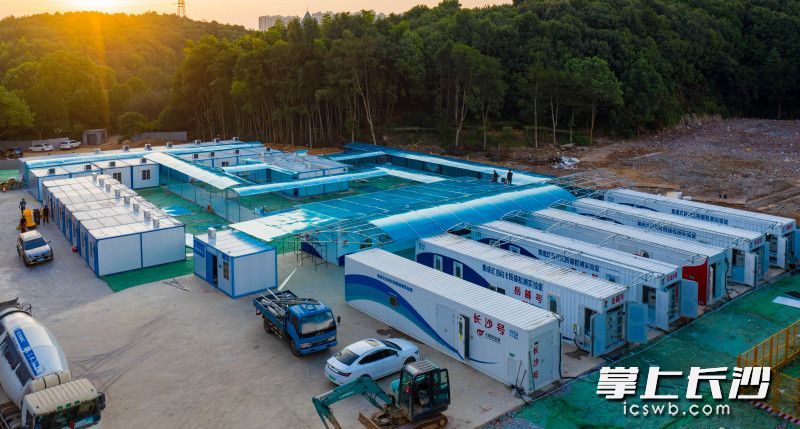
6 shelter laboratories and supporting facilities were completed in the open space on the north side of the Changsha Public Health Treatment Center in early August, and the other 2 settled in Ningxiang and Liuyang respectively. As the shelters were put into use, the testing agencies in Changsha had a maximum testing capacity of 480,000 copies per tube per day, which efficiently supported large-scale screening. At the same time, our city sent a number of inspection teams to supervise nucleic acid sampling and testing institutions to ensure the safe, orderly and efficient nucleic acid sampling and testing.
Adequate emergency preparations made for epidemic prevention
Hospitals are the most critical front lines for epidemic prevention and control. At present, five confirmed cases of COVID-19 in Changsha are all under quarantine and treatment in the designated hospital—Changsha Public Health Rescue Center and are in stable conditions.
During the epidemic outbreak in early 2020, Changsha Public Health Treatment Center, as the only designated hospital in Hunan Province, received 239 confirmed patients within 58 days, with a cure rate of 99.26%. At present, 1 municipal hospital and 4 county-level hospitals have been designated as treatment centers. 1 municipal hospital and 4 county-level hospitals as backup. Moreover, more than 1,000 medical workers have taken relevant training courses.
The reconstruction and expansion of the Municipal Public Health Rescue Center, which was rated as one of the top ten public service projects in Changsha, was started on June 23, with 1,000 beds. It aims to be one of the regional infectious disease medical centers in China, focusing on severe infectious diseases.
To ensure normal operation, the project will be carried out in two phases. The first phase is to construct an infectious building and an emergency fever clinic building with 600 beds, which is expected to be completed in 2023. The second phase is to construct a comprehensive medical building with 600 beds, which is expected to be completed in 2025.
If medical personnel are the “warriors” on the anti-epidemic front line, then material support teams would be their “ammunition depots”.
Adequate preparations should be made in advance. As early as October last year, Changsha started the material reserve work. At the beginning of this February, 142 kinds of public health emergency supplies with a total value of 67.86 million yuan were all in place, and already in the warehouse after being checked by a third-party inspection institution. Medical and disease control institutions at all levels have reserved supplies sufficient for 30 days.
In response to the city’s anti-epidemic policies, the nucleic acid test kits were adjusted from the contract reserve to the physical reserve on August 2. What’s more, 21 negative pressure ambulances in the municipal public health emergency material reserve base were entrusted to the Municipal 120 Emergency Center for epidemic prevention.
The epidemic situation remains stable and sound, yet it is far from the end of the epidemic.
Changsha COVID-19 Epidemic Prevention and Control Headquarters held a meeting on the afternoon of August 11. On the meeting, Zhen Jianxin, deputy secretary of the municipal party committee, mayor, and secretary of the Party Working Committee of Hunan Xiangjiang New District, stressed that the city will take the overall situation into account and remain committed to playing its part in the anti-epidemic battle.
Changsha, with a population of more than more than 10 million, must attach high importance to the epidemic outbreak and unexpected public health emergencies that may bounce back and occur in the future.
The city has issued the "Changsha City's Emergency Plan for the Possible COVID-19 Pandemic" and "Changsha City's Guidelines for Mass Nucleic Acid Testing (First Edition)". To implement the plan and guidelines, the city will purchase mobile microbiological inspection vehicles, establish epidemiological investigation teams which will be on call round the clock and conduct semi-militarized management. Great efforts will also be made in mass nucleic acid testing and emergency response, aiming to build a strong defense line for people’s lives and health.

Under the strong leadership of the Municipal Party Committee and the Municipal Government, the whole city has built a strict prevention and control system from the overall situation. From August 2 to 12, There have been no new confirmed cases or asymptomatic infections in Changsha, where economic and social life is stable and orderly and residents live as usual.
Accurate and efficient epidemic prevention and control measures
Changsha responded calmly to the sudden epidemic attack.
"We will always adhere to scientific and precise prevention measures to win the battle against the epidemic." On July 28, a COVID-19 prevention and control conference was held in Changsha following a provincial video conference. Wu Guiying, secretary of the CPC Changsha Municipal Committee, immediately issued a mobilization order, clearly proposing the "five in place"— recognition in place, disposal in place, measures in place , linkages in place, and responsibility in place, requiring the all-out efforts to protect people's lives and health.
The municipal epidemic prevention and control headquarter launched the emergency response mechanism and the prevention and control command system. 14 working groups cooperate closely with daily reporting and scheduling to advance the emergency response work.
Changsha promptly implemented closed control of the epidemic areas shortly after the report of two confirmed cases and three asymptomatic infections in Ningxiang city and Tianxin District from July 29 to August 1. Meanwhile, the local government determined the action track of cases by means of "big data plus grid" and carried out large-scale screening by nucleic acid testing.
In medium-risk areas where the residents are accurately divided by community and building, all the people in close contact with confirmed cases have been quarantined in a centralized manner and observed according to their categories. Staff members supervised key sites and coordinated efforts to promote the vaccination. A series of urgent and initiative actions, precise management and control have curbed the spread of the epidemic.
In accordance with the requirements of the Joint prevention and control mechanism of the State Council, Changsha Municipal Committee of the CPC held several meetings to arrange the epidemic prevention and control work intensively. It has always attached great importance to the improvement of emergency response mechanism and advance preparations for the massive outbreak of the epidemic, while implementing the epidemic prevention control measures strictly, promptly and efficiently.
Party organizations and party members at all levels in the city acted upon orders fearlessly to build a strong fortress for epidemic prevention and control. All the departments, including the people's Congress, the Chinese People's Political Consultative Conference, workers, youth and woman mass organizations are mobilized in an emergency to rush to the front line and ensure the implementation of various measures.
Increased nucleic acid testing capacity
Taxi drivers lined up for nucleic acid sampling at the nucleic acid collection site of East Bus Station on August 11. By the end of the day, the site had collected nucleic acid samples from nearly 2,000 people. On the same day, the Municipal Health Commission organized the nucleic acid testing and sampling emergency teams of 3 municipal hospitals to basically complete the nucleic acid sampling work of more than 40,000 taxi and online car drivers in the city within two days at 10 sampling points. At the same time, the shelter laboratory was launched to ensure that the test results can be viewed within 24 hours after sampling.

Nucleic acid testing is key to quickly identify the source of infection and curb the spread of the epidemic. According to deployment, from August, a number of municipal hospitals have undertaken the daily nucleic acid testing and sampling for key populations in Changsha's rail transit, public transportation groups, isolation sites, and port units to guarantee their safety.
Since the outbreak of the current epidemic, Changsha has not only intensively screened populations in closed areas and key positions, and expanded screening of peripheral populations, but also required general hospitals, township health centers, and community health service centers above the second level in the city to carry out the sampling for the society, so that key populations and ordinary citizens can take nucleic acid sampling nearby.
"Changsha is well prepared for such a large-scale nucleic acid test." Zhou Min, Party Secretary and Director of the Municipal Health Commission, said that at the beginning of this year, the city established a large-scale nucleic acid emergency sampling and testing headquarters, made a plan for sampling points and trained sampling personnel. After the outbreak of the current epidemic, all districts and counties (cities) were again required to carry out emergency drills for nucleic acid testing to effectively improve the nucleic acid testing capability and promote the response mechanism for epidemic prevention and control.
"The efficiency gets promoted, averaging 210 nucleic acid samples every half hour." On August 3, a nucleic acid detection emergency drill including 800 people was held at a 6,000-square-meter modern farm vacated for free by a private entrepreneur called Huang Huan in Shaping Street, Kaifu District. Based on standards and safety, Kaifu District conducted the nucleic acid testing at schools, commercial complexes and other open, ventilated places instead of medical and testing institutions, which not only reduced the risk of cross-infection, but also prevented heatstroke.
Yuhuating Street community in Yuhua District developed a standardized action manual for testing and sampling, which illustrates detailedly and clearly how to strengthen provision in sampling points, enhance publicity for residents to participate in testing, maintain order on the spot, handle emergency, and even how to provide assistance if the on-site citizens suddenly become unwell. "The manual clarifies the action rules and operating procedures, making it easy for front-line personnel to arrange tasks and avoid ineffective work due to a lack of skills." The person in charge of the Yuhuating Sub-district Office said.

6 shelter laboratories and supporting facilities were completed in the open space on the north side of the Changsha Public Health Treatment Center in early August, and the other 2 settled in Ningxiang and Liuyang respectively. As the shelters were put into use, the testing agencies in Changsha had a maximum testing capacity of 480,000 copies per tube per day, which efficiently supported large-scale screening. At the same time, our city sent a number of inspection teams to supervise nucleic acid sampling and testing institutions to ensure the safe, orderly and efficient nucleic acid sampling and testing.
Adequate emergency preparations made for epidemic prevention
Hospitals are the most critical front lines for epidemic prevention and control. At present, five confirmed cases of COVID-19 in Changsha are all under quarantine and treatment in the designated hospital—Changsha Public Health Rescue Center and are in stable conditions.
During the epidemic outbreak in early 2020, Changsha Public Health Treatment Center, as the only designated hospital in Hunan Province, received 239 confirmed patients within 58 days, with a cure rate of 99.26%. At present, 1 municipal hospital and 4 county-level hospitals have been designated as treatment centers. 1 municipal hospital and 4 county-level hospitals as backup. Moreover, more than 1,000 medical workers have taken relevant training courses.
The reconstruction and expansion of the Municipal Public Health Rescue Center, which was rated as one of the top ten public service projects in Changsha, was started on June 23, with 1,000 beds. It aims to be one of the regional infectious disease medical centers in China, focusing on severe infectious diseases.
To ensure normal operation, the project will be carried out in two phases. The first phase is to construct an infectious building and an emergency fever clinic building with 600 beds, which is expected to be completed in 2023. The second phase is to construct a comprehensive medical building with 600 beds, which is expected to be completed in 2025.
If medical personnel are the “warriors” on the anti-epidemic front line, then material support teams would be their “ammunition depots”.
Adequate preparations should be made in advance. As early as October last year, Changsha started the material reserve work. At the beginning of this February, 142 kinds of public health emergency supplies with a total value of 67.86 million yuan were all in place, and already in the warehouse after being checked by a third-party inspection institution. Medical and disease control institutions at all levels have reserved supplies sufficient for 30 days.
In response to the city’s anti-epidemic policies, the nucleic acid test kits were adjusted from the contract reserve to the physical reserve on August 2. What’s more, 21 negative pressure ambulances in the municipal public health emergency material reserve base were entrusted to the Municipal 120 Emergency Center for epidemic prevention.
The epidemic situation remains stable and sound, yet it is far from the end of the epidemic.
Changsha COVID-19 Epidemic Prevention and Control Headquarters held a meeting on the afternoon of August 11. On the meeting, Zhen Jianxin, deputy secretary of the municipal party committee, mayor, and secretary of the Party Working Committee of Hunan Xiangjiang New District, stressed that the city will take the overall situation into account and remain committed to playing its part in the anti-epidemic battle.
Changsha, with a population of more than more than 10 million, must attach high importance to the epidemic outbreak and unexpected public health emergencies that may bounce back and occur in the future.
The city has issued the "Changsha City's Emergency Plan for the Possible COVID-19 Pandemic" and "Changsha City's Guidelines for Mass Nucleic Acid Testing (First Edition)". To implement the plan and guidelines, the city will purchase mobile microbiological inspection vehicles, establish epidemiological investigation teams which will be on call round the clock and conduct semi-militarized management. Great efforts will also be made in mass nucleic acid testing and emergency response, aiming to build a strong defense line for people’s lives and health.

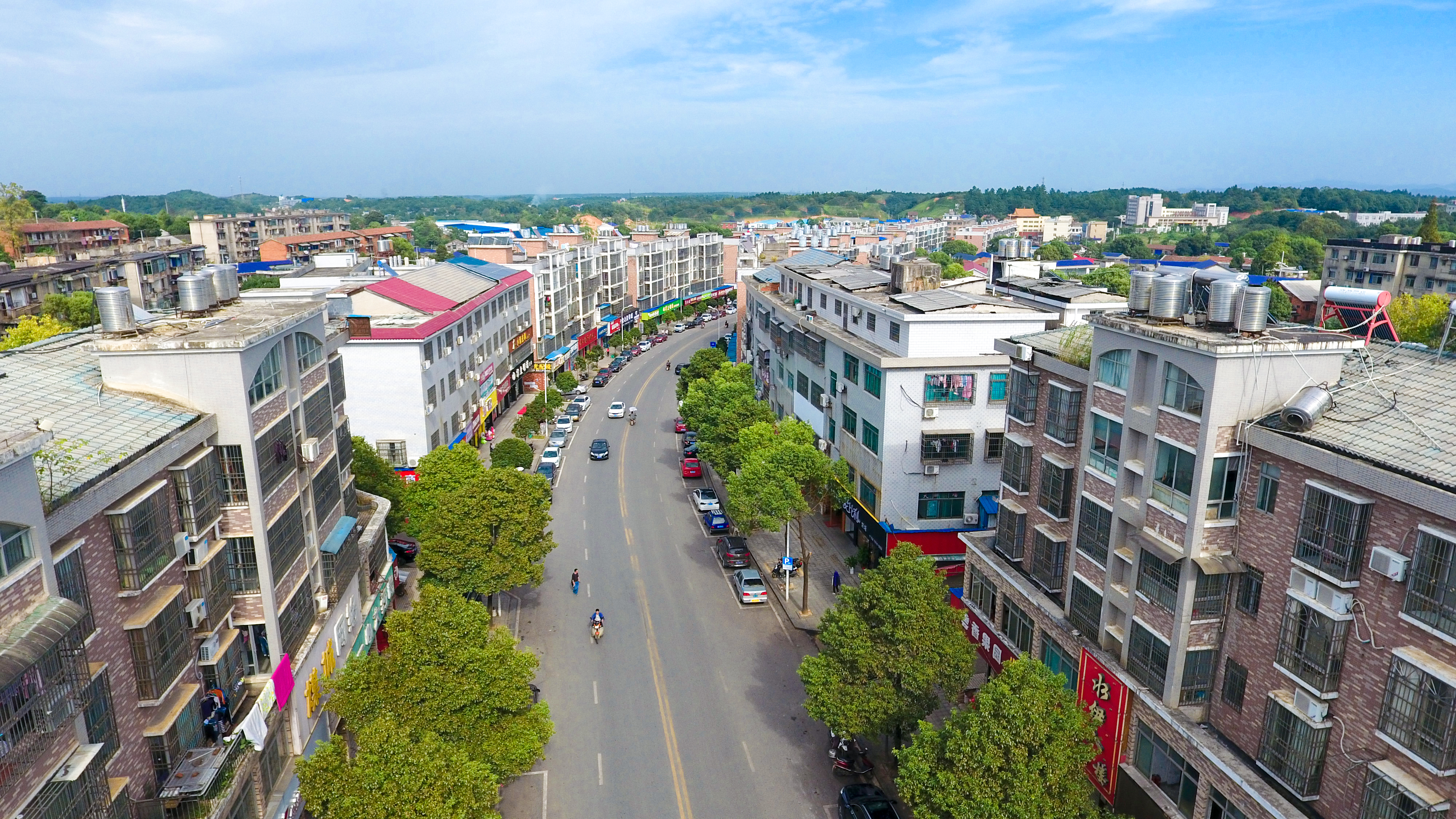 Ningxiang listed on China’s top 100 counties with comprehensive competitiveness
Ningxiang listed on China’s top 100 counties with comprehensive competitiveness  College welcomes a student of courage
College welcomes a student of courage 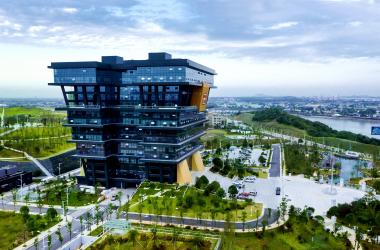 Changsha Blue Moon Valley Intelligent Home Appliances Industrial Town
Changsha Blue Moon Valley Intelligent Home Appliances Industrial Town  This is Ningxiang High-tech Zone
This is Ningxiang High-tech Zone 

